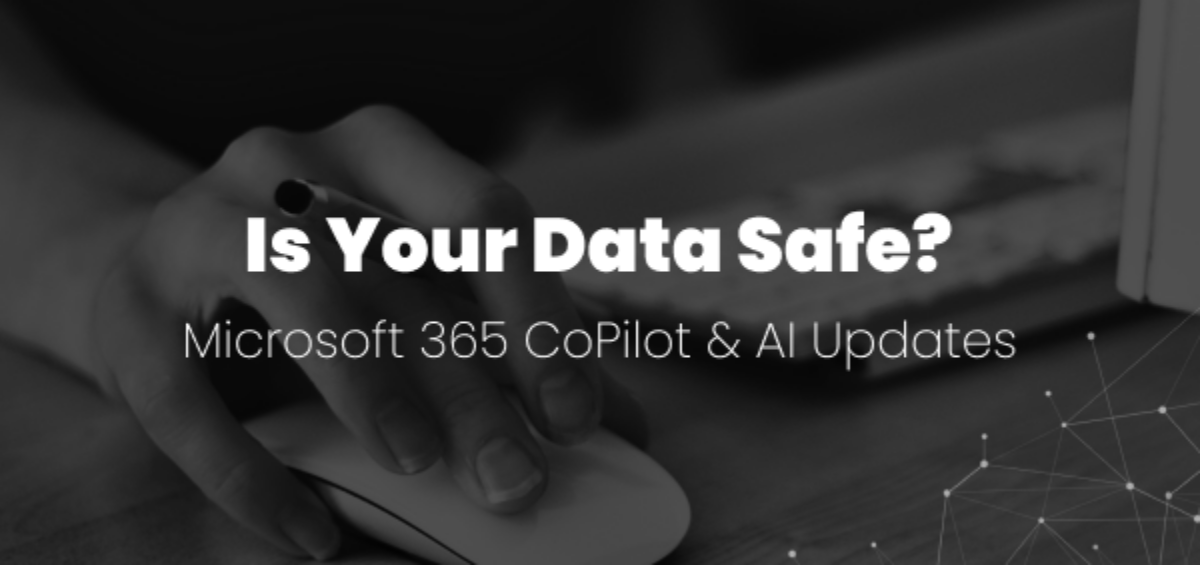Artificial intelligence has become deeply ingrained in our daily lives, transforming how we interact with data and make decisions. From the way we access healthcare to the way we manage our finances and shop, AI offers countless opportunities.
However, this information comes with inherent risks. Tools like Microsoft CoPilot and Deepseek enhance access to information and increase the potential for personal and sensitive data exposure.
This raises a critical question: Is your data safe? Let’s get into the details of data privacy challenges presented by AI and explore strategies to mitigate these risks and safeguard your information.
Understanding Data Privacy In The Context of AI
Data and cybersecurity have always been top priorities for executives, especially for data-intensive organisations. The recent rise of AI has made the situation even more critical. As organisations increasingly rely on AI technologies to improve decision-making, the volume of data processed has become unprecedented.
Statistics show that over 40% of global businesses are using AI in their business operations. Global AI investment is projected to reach $200 billion by 2025. This rapid adoption of AI, including large language models (LLMs) like Microsoft CoPilot and China’s Deepseek, has completely transformed data processing, analysis, and predictive modelling. However, this advancement comes at a cost: the collection of vast amounts of personal data raises significant privacy issues.
This massive data consumption is concerning people about how this information is handled, particularly regarding transparency and user consent. It also highlights the urgent need to protect individual data rights and maintain confidentiality to prevent the misuse of sensitive data.
AI Data Collection Methods
AI systems rely on massive data sets to constantly learn and refine their algorithms and outputs. This data-driven improvement utilises different data collection methods. While crucial for AI advancement, these methods can lead to privacy breaches and data theft. Let’s take a look at them:
1. Web Scraping
Web scraping and crawling are the most common methods used by AI apps to collect online data. AI-powered web scraping tools help businesses collect huge volumes of useful content from online forums. This data can include everything from articles, blogs, news, product reviews, social media posts, and public forum discussions.
2. Biometric Data
AI-powered applications that use facial recognition, fingerprints, and other biometric technologies can be highly invasive. If compromised, this sensitive data can have irreparable consequences for individual privacy, both financially and legally.
3. Chatbots
Chatbots like Deepseek have become the new face of online engagement. They facilitate a range of activities, from learning new skills to sharing ideas and opinions to sensitive professional information. This rich exchange can also present both opportunities and challenges for data privacy.
A recent cyberattack on Deepseek has put all its user information at high risk of exploitation and unethical usage.
4. Integrations
Microsoft 365 has more than 400 million paid users, and the credit goes to the growth generated by Copilot. It can seamlessly integrate across the Microsoft ecosystem (Word, Excel, PowerPoint, Outlook). Copilot, while generally considered safe, still struggles with permission management, data repurposing and privacy breaches.
Is Your Data Safe? Privacy Risk Poses by AI
As AI evolves, more challenges related to data privacy are emerging. These challenges may include risks like:
1. Unauthorised Use of Personal Data
Incorporating personal data into AI models without proper consent poses significant risks. Deepseek’s privacy policy reveals that the user data is stored in the People’s Republic of China (PRC), with no mention of GDPR (European Union General Data Protection Regulation) compliance. The jurisdiction of data processing is also stated as PRC. These factors raise some major red flags regarding user data privacy.
This lack of transparency and adherence to international privacy standards can lead to unauthorised use of information. Such misuse can result in serious consequences, like privacy violations, financial penalties, and damage to your business reputation.
2. Third-Party Data Breaching
Third-party data breaches are a significant cybersecurity trend to prepare for in 2025. Nearly 78% of organisations rely on third-party AI tools, amplifying security risks. Research indicates that 29% of data breaches originate from third-party attacks, making them a common source of vulnerability.
In this data-sharing ecosystem, personal information becomes a tradable commodity. Data is transferred across platforms without user consent. This practice increases the risk of phishing scams, ransomware attacks, and other malicious activities.
3. Re-Identification Issues
Even with careful data masking and anonymisation, there are strong possibilities of re-identifying individuals from that seemingly anonymous data. This re-identification poses a serious threat, particularly in sensitive sectors like healthcare and finance. The information is often highly personal in these fields, including details about medical conditions, financial transactions, and other private aspects of an individual’s life.
Re-identification of such sensitive information can lead to serious repercussions, including discrimination, identity theft, and financial exploitation.
4. Copyright and Intellectual Property
AI’s constant learning and improvement from existing data is creating copyright and privacy problems. Content creators, such as journalists and authors, argue their work is being exploited without permission or compensation. This infringes on copyright and intellectual property, especially when personal data is involved.
Strategies to Implement Best AI Privacy Practices
Here are some best practices to safeguard your organisation’s data against invasive potential use of AI:
- Seek User Consent and Control: Organisations must empower users with “consent, access, and control” over their data. Consent should be freely given and reaffirmed if the intended use of the data changes. Users should have easy access to their data and be able to correct inaccuracies or request deletion.
- Limit Data Collection and Retention: Restrict data collection to what is strictly necessary and legally possible. A crucial step is to avoid using confidential data altogether in AI training or as input for generative AI tools. Establish clear data retention policies with a specific timeline for deletion. The goal should be to minimise the amount of data held and delete it as soon as it is no longer needed.
- Follow Best Security Practices: Implement comprehensive ethical AI development and usage guidelines. You can also utilise AI-powered cybersecurity solutions, such as Microsoft Security Copilot, to enhance threat detection and response.
Take Control of Your Data Future With Rejuvenate
As we continue to learn more about AI’s evolving landscape and its associated data privacy challenges, one fundamental question remains the same: Is your data safe? The answer depends on a clear understanding of how AI is used ethically, strong privacy policies, and a real commitment to transparency and accountability. It is about being proactive, informed, and partnering with the right experts.
If you are looking for a trusted partner to help you take control of the complex world of data security, connect with Rejuvenate. With extensive experience in IT outsourcing, we provide best-in-class IT support and cybersecurity compliance solutions tailored for businesses of all sizes.
Let us help you build a more secure future for your data!












